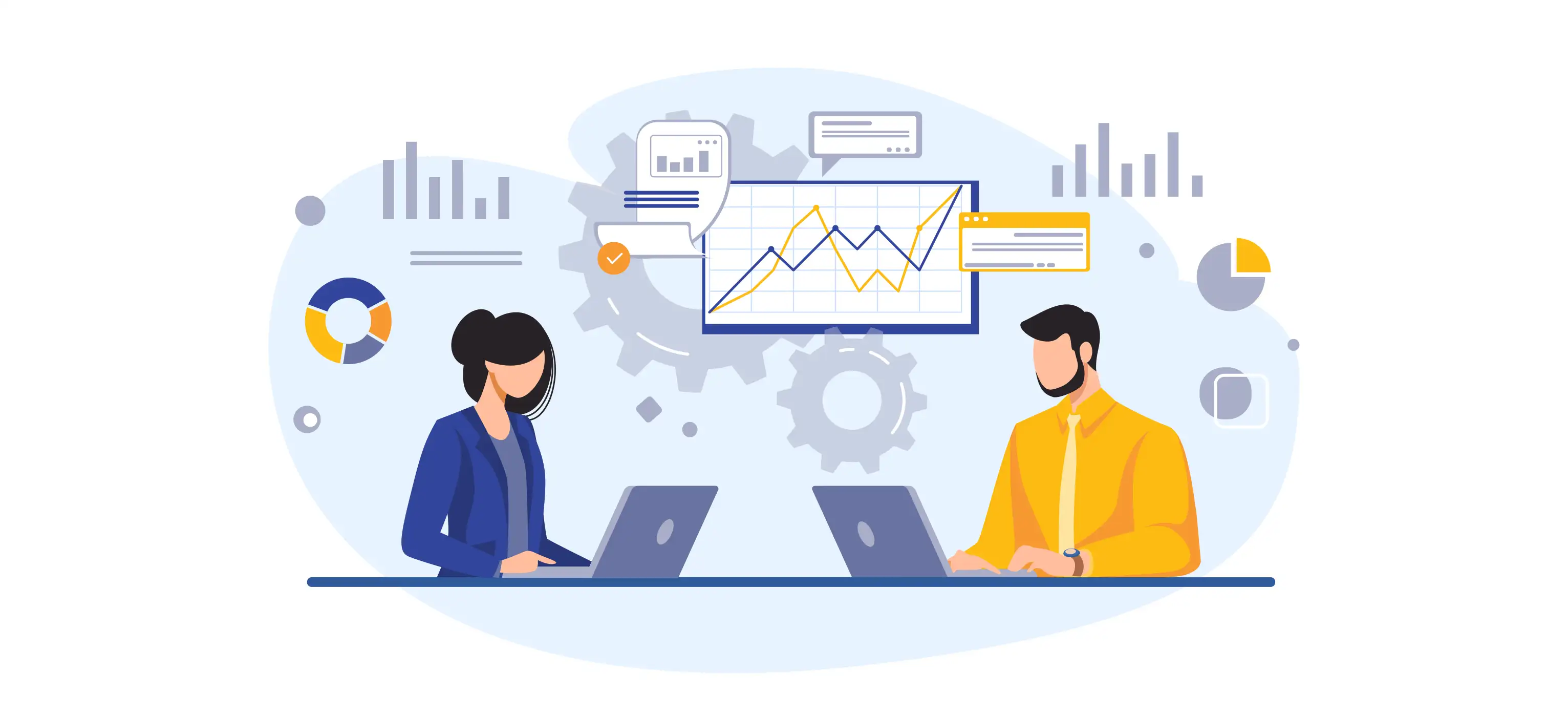 Piyush P
Aug 01, 2024
Piyush P
Aug 01, 2024

In the modern business landscape, analytics is crucial in decision-making processes. Analytics involves systematically analyzing data to uncover valuable insights to drive strategic decisions and improve business performance. Two key terms often arise within this realm: Business Analytics and Data Analytics. While these terms may seem interchangeable, they hold distinct meanings and purposes.
This blog will explore the difference between Business Analytics and Data Analytics, shedding light on their unique roles in empowering organizations to make informed choices based on data-driven insights.
Business Analytics analyzes data to gain valuable insights that help organizations make informed decisions and achieve their business goals. It involves using statistical methods, algorithms, and predictive models to uncover patterns, trends, and relationships within data.
By understanding past performance and predicting future outcomes, Business Analytics enables companies to optimize processes, improve efficiency, and drive strategic growth initiatives.
Business Analytics encompasses several key characteristics that distinguish it from other forms of data analysis. Understanding these traits is crucial for organizations seeking to leverage analytics effectively to drive business success.
You may like to know: Top In-Demand Business Certifications
Data Analytics examines large sets of data to uncover meaningful patterns, trends, and insights. It involves applying statistical analysis, data mining, and machine learning techniques to extract valuable information from raw data. Data Analytics helps organizations make informed decisions, solve problems, and identify opportunities for improvement.
By analyzing data from various sources, including databases, sensors, and social media platforms, Data Analytics enables businesses to gain valuable insights that drive growth and innovation.
Read more: Data Analytics: Definition with Examples
Data Analytics has distinctive characteristics defining its approach to analyzing and deriving insights from data. Understanding these traits is essential for organizations aiming to harness data's power effectively.
Check out: Best Data Analytics Courses
When it comes to roles centered around data, there are distinct differences between a Business Analyst and a Data Analyst. Understanding the difference between data analyst and business analyst is crucial for organizations:
Business Analysts translate business needs into actionable insights, collaborating with stakeholders to streamline processes and enhance performance. Data Analysts examine data to uncover trends and patterns, providing insights that support decision-making and drive organizational success.
Business Analysts use qualitative and quantitative analysis and business intelligence tools to derive insights from data. Data Analysts rely on statistical analysis, data mining, and programming languages to extract insights from large datasets, utilizing visualization techniques for effective communication.
Business Analysts need analytical, problem-solving, and communication skills, business domain knowledge, and project management expertise. Data Analysts require proficiency in statistics, programming, data manipulation, and visualization, along with the ability to communicate complex findings to non-technical stakeholders.
Business Analysts facilitate decision-making by providing insights into market trends, customer behavior, and operational efficiency. Data Analysts support decision-making with data-driven insights and recommendations based on statistical analysis and predictive modeling.
Business Analysts contribute to organizational strategy by identifying opportunities for innovation, process improvement, and revenue growth. Data Analysts support strategic initiatives by enabling evidence-based decision-making, identifying market opportunities, and mitigating risks through data-driven insights.
In the realm of data-driven decision-making, Business Analytics and Data Analytics share several commonalities that contribute to their effectiveness in supporting organizational goals.
While Business Analytics and Data Analytics have distinct focuses and methodologies, they converge in many areas to enhance decision-making and drive organizational success.
Explore more: Best Data Analytics Tools
In conclusion, while Business Analytics and Data Analytics serve unique roles in the business landscape, their integration is vital for organizations to thrive in a data-driven environment. Companies can effectively leverage both disciplines to drive informed decision-making, optimize processes, and achieve strategic objectives by understanding the difference between data analysts and business analysts.

Microsoft Azure Certified Data Science Trainer
Piyush P is a Microsoft-Certified Data Scientist and Technical Trainer with 12 years of development and training experience. He is now part of Edoxi Training Institute's expert training team and imparts technical training on Microsoft Azure Data Science. While being a certified trainer of Microsoft Azure, he seeks to increase his data science and analytics efficiency.